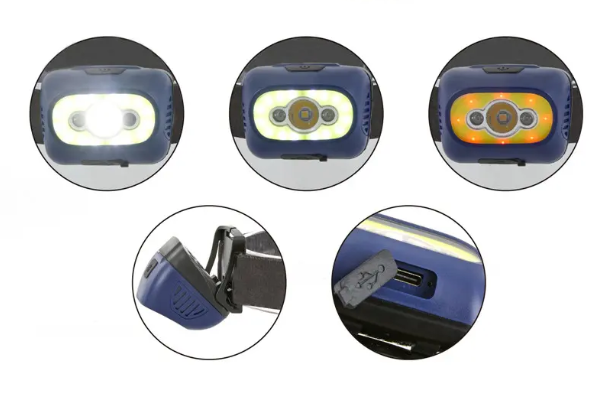Outdoor headlamp is a commonly used outdoor lighting tool, widely used in hiking, camping, exploration and other outdoor activities. Due to the complexity and variability of the outdoor environment, the outdoor headlamp needs to have a certain waterproof, dust-proof and corrosion resistance to ensure its normal use and long-term durability. As a common environmental test method, salt spray test is widely used to evaluate the corrosion resistance of products.
First, let’s take a look at the basic concepts and functions of salt spray testing. Salt spray testing is a kind of simulation of corrosive climate conditions in the Marine environment,through the production of salt spray environment in the laboratory, accelerate the corrosion process of the product, and evaluate the corrosion resistance of the product. Salt spray testing can simulate environmental factors such as high humidity, high temperature and high salinity in Marine climate, and evaluate the corrosion performance of metal parts, coatings and seals of products, so as to guide the design and improvement of products.
For LED headlamps, which are often used in outdoor environments, salt spray testing is very necessary. Outdoor headlamps are often exposed to environments with high humidity and more, such as beaches and coastal areas. The salt and humidity in these environments will corrode the metal components, electronic components, and seals of the headlamp, resulting in reduced or even damaged headlamp performance.
Therefore, the corrosion resistance of the headlamp in these harsh environments can be evaluated through salt spray testing, thus guiding product improvement and optimization.
So, exactly how long do you need to do the salt spray test?
According to international standards and industry specifications, outdoor headlamps usually require a 48-hour salt spray test. This time is determined according to the use of the headlamp in the outdoor environment and the rate of corrosion. In general, a 48-hour salt spray test can simulate the use of headlamps in beaches, coastal areas and other environments to assess their corrosion resistance. Of course, for some headlamps with special requirements, such as for exploration activities in extreme environments, longer salt spray tests may be required to ensure their corrosion resistance.
When conducting a salt spray test, there are a few details to pay attention to. First of all, it is necessary to choose the appropriate salt spray test equipment and test methods to ensure the accuracy and reliability of the test results. Secondly, the appropriate salt test time and conditions should be selected according to the actual use and requirements of the product. Finally, it is necessary to analyze and evaluate the test results, find out the problems in time and take corresponding improvement measures.
To sum up, rechargeable sensor headlamps need to be salt spray tested to assess their corrosion resistance. Under normal circumstances, the headlamp needs to be tested for 48 hours of salt spray to simulate the use of harsh environments such as beaches and coastal areas. Through the salt spray test, you can guide the design and improvement of the headlamp, improve its durability and reliability, and ensure the safety and convenience of outdoor activities!
Post time: Apr-16-2024

